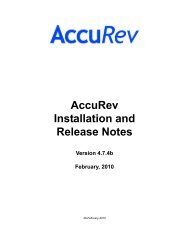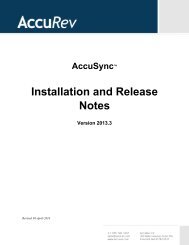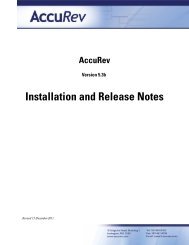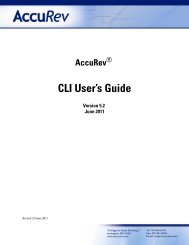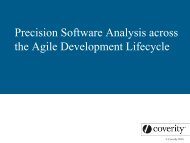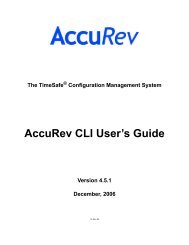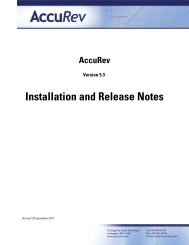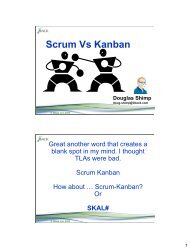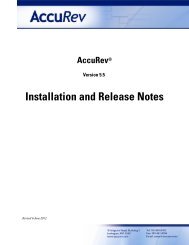You also want an ePaper? Increase the reach of your titles
YUMPU automatically turns print PDFs into web optimized ePapers that Google loves.
You might assume that the<br />
workspace synchronization process<br />
involves the direct transfer of data<br />
from one workspace to another.<br />
But this is not the way <strong>AccuRev</strong><br />
organizes the work environment.<br />
Instead of transferring data directly<br />
between private areas (that is,<br />
between users’ workspaces),<br />
<strong>AccuRev</strong> organizes the data<br />
transfer into two steps:<br />
1. One user makes his changes<br />
public — available to all the<br />
other members of his team.<br />
This step is called promoting.<br />
2. Whenever they wish, other team members incorporate the public changes into their own<br />
workspaces. This step is called updating.<br />
The first step involves a public data area, called a stream. <strong>AccuRev</strong> has several kinds of streams;<br />
the kind that we’re discussing here is called a backing stream. We’ll see below how the data in<br />
this public stream “is in back of” or “provides a backstop for” all the private workspaces of the<br />
team members.<br />
Change and Synchronization: The Four Basic Commands<br />
With the usage model described above, you’ll be able to accomplish most of your <strong>AccuRev</strong> work<br />
with four simple commands: Keep, Promote, Update, and Merge. We describe these commands<br />
in the following sections. Each section has a subsection titled “The Fine Print”, in which we<br />
present additional usage details, notes on the way <strong>AccuRev</strong> implements certain features, and other<br />
tidbits of interest. You might want to skip over these sections on your first reading of this material.<br />
Keep: Preserving Changes in Your Private Workspace<br />
An <strong>AccuRev</strong> workspace is just a normal directory tree, in which you make changes to versioncontrolled<br />
files. You can work with the files using text editors, build and test tools, IDEs, etc., just<br />
as if the files weren’t version-controlled at all. For example, you might edit a source file and<br />
invoke the editor’s “Save” command a dozen times over the course of an hour or two. These<br />
operations don’t involve <strong>AccuRev</strong> at all — they simply have the operating system change the<br />
contents and the timestamp of the file in your workspace.<br />
You don’t need to perform a “check out” operation or otherwise get permission from <strong>AccuRev</strong><br />
before editing a file in your workspace. (Some legacy CM systems do impose such a regimen.)<br />
<strong>AccuRev</strong> User’s <strong>Guide</strong> (<strong>GUI</strong>) 20




